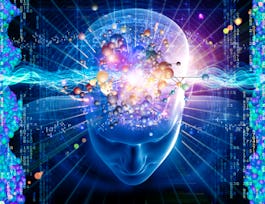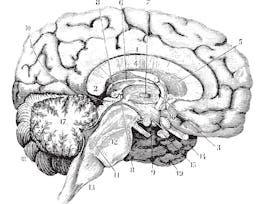Chemical reactions underpin the production of pretty much everything in our modern world. But, what is the driving force behind reactions? Why do some reactions occur over geological time scales whilst others are so fast that we need femtosecond-pulsed lasers to study them? Ultimately, what is going on at the atomic level? Discover the answers to such fundamental questions and more on this course in introductory physical chemistry.



Introduction to Physical Chemistry



Instructors: Patrick J O'Malley, D.Sc
Sponsored by Syrian Youth Assembly
84,608 already enrolled
(715 reviews)
Details to know

Add to your LinkedIn profile
7 quizzes, 6 assignments
See how employees at top companies are mastering in-demand skills


Earn a career certificate
Add this credential to your LinkedIn profile, resume, or CV
Share it on social media and in your performance review

There are 10 modules in this course
This module explores thermodynamic definitions, the zeroth law of thermodynamics and temperature, the first law of thermodynamics and enthalpy, reversible expansion, and heat capacity.
What's included
7 videos2 readings1 quiz
This module explores the second law of thermodynamics and entropy, the second law of thermodynamics and spontaneity, the second law of thermodynamics and equilibrium, the third law of thermodynamics and absolute entropy, and Hess' Law.
What's included
7 videos1 reading1 quiz1 assignment
This lab allows you to further explore thermodynamics.
What's included
2 videos2 readings1 assignment
This module explores the rate of reaction, stoichiometry and order, zero order reactions, first order reactions, second order reactions, determination of reaction order, and effect of temperature on reaction rate.
What's included
11 videos1 reading1 quiz
This module explores complex reactions, steady-state approximation, and catalysis.
What's included
8 videos1 reading1 quiz1 assignment
This lab allows you to further explore kinetics.
What's included
4 videos1 reading1 assignment
This module explores Planck's quantum of energy, particle nature of light, wave nature of matter, Heissenberg's uncertainty principle, the Schrödinger equation, free particle & the particle in a box, Born's interpretation of the wavefunction, and normalisation of the wavefunction.
What's included
11 videos1 reading1 quiz
This experiment involves the visible absorption spectra of dyes.
What's included
1 video2 readings1 assignment
This module explores hydrogen atoms, hydrogen atom quantum numbers, radial and angular solutions for hydrogenic atoms, and energy levels for hydrogenic atoms.
What's included
8 videos1 reading1 quiz1 assignment
This lab allows you to further explore quantum chemistry.
What's included
2 videos1 reading1 quiz
Instructors



Offered by
Why people choose Coursera for their career




Learner reviews
715 reviews
- 5 stars
78.24%
- 4 stars
15.48%
- 3 stars
4.32%
- 2 stars
0.69%
- 1 star
1.25%
Showing 3 of 715
Reviewed on Jul 11, 2020
I found the course really useful , especially the practical sections at the end of every theoretical explanations.
Reviewed on Nov 8, 2024
Very intersting course but hard concepts to interact with but overall very worth doing especially if u want to put on a personal statement
Reviewed on Oct 23, 2016
Me gusto el curso. El laboratorio virtual fue de mucha ayuda y ayuda a visualizar los ejercicios de mejor manera. Excelente
Recommended if you're interested in Physical Science and Engineering

Board Infinity

University of Colorado Boulder

The University of Edinburgh

University of Pennsylvania

Open new doors with Coursera Plus
Unlimited access to 10,000+ world-class courses, hands-on projects, and job-ready certificate programs - all included in your subscription
Advance your career with an online degree
Earn a degree from world-class universities - 100% online
Join over 3,400 global companies that choose Coursera for Business
Upskill your employees to excel in the digital economy


